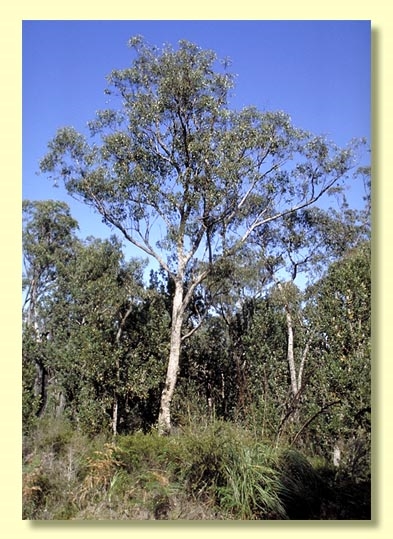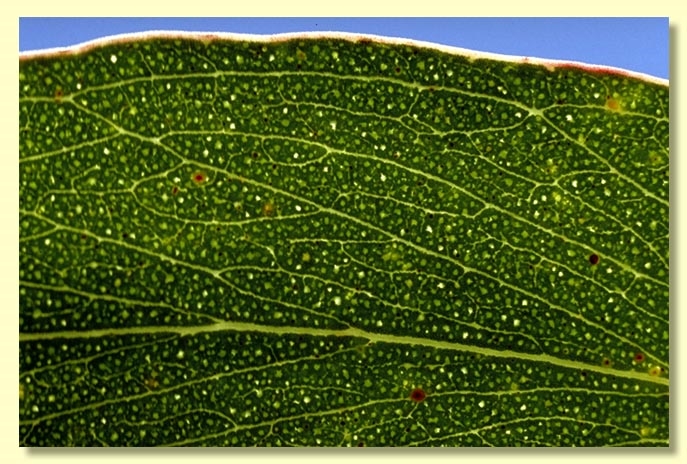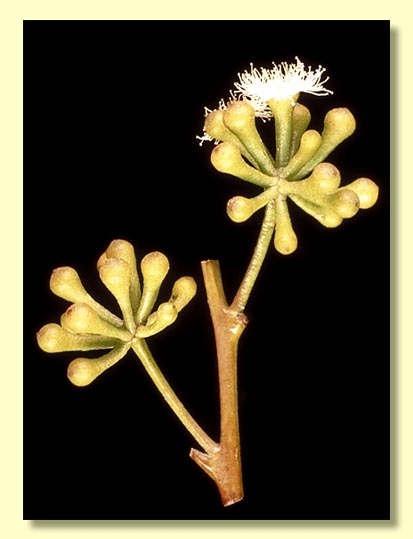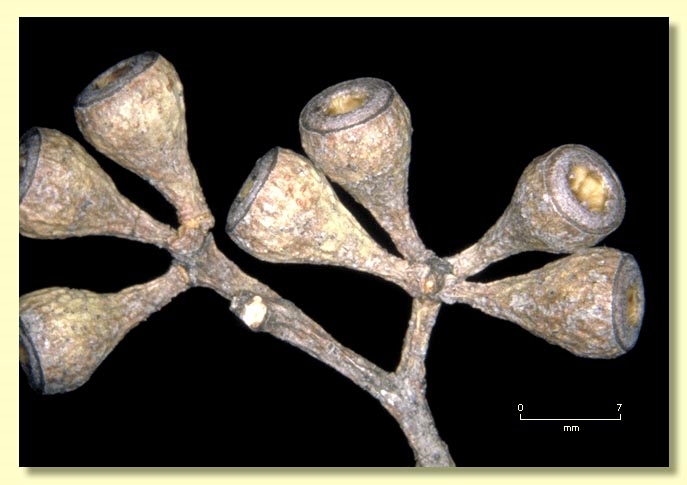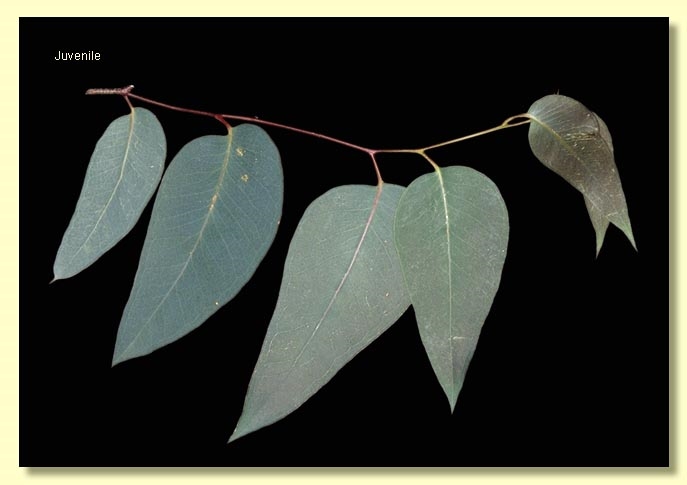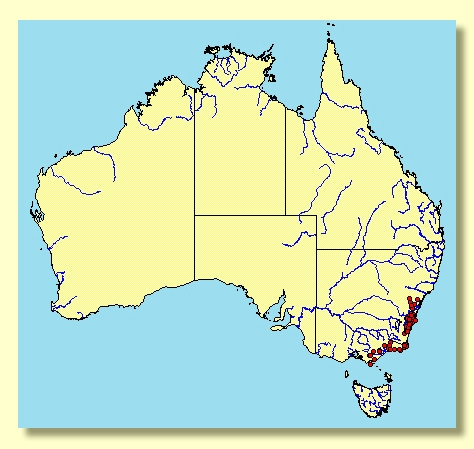Euclid - Online edition
Eucalyptus consideniana
Eucalyptus | Eucalyptus | Cineraceae | Psathyroxylon | Considenianae
Eucalyptus consideniana Maiden, Proc. Linn. Soc. New South Wales 2nd ser., 29: 475 (1904).
T: New South Wales. top of mountain east of Burragorang, R.H. Cambage 1022, 11 November 1901; lectotype: NSW335808; fide Bean, A.R., Telopea 12(4): 514-515 (2010).
Bark rough on most of trunk often extending to branches 8 cm diameter, finely fibrous, grey, grey-brown or greyish yellow, sometimes prickly, sometimes with horizontal black scars; smooth bark white or grey.
Juvenile growth (coppice or field seedlings to 50 cm): stem rounded or square in cross-section, not glaucous; juvenile leaves opposite, sessile, elliptic for about 3 pairs then alternate, petiolate, ovate to lanceolate to falcate, 7.5–16.5 cm long, 1.2–7.2 cm wide, margin entire, green to blue-green. Stems of saplings not glaucous.
Adult leaves alternate, petiole 1–2.6 cm long; blade lanceolate to falcate, 6.5–18 cm long, 1–3 cm wide, base oblique or tapering to petiole, margin entire, concolorous, glossy, green to grey-green, side-veins acute, reticulation sparse or obscure, intramarginal vein parallel to and remote from margin, oil glands island.
Inflorescence axillary unbranched, peduncles 0.5–1.4 cm long, buds 11 to 19 per umbel, pedicels 0.3–0.8 cm long. Mature buds obovoid or clavate, 0.3–0.4 cm long, 0.2–0.4 cm wide, green to yellow, smooth, scar absent, operculum rounded, stamens inflexed, usually with outer staminodes, anthers reniform to cordate, versatile, dorsifixed, dehiscing by confluent slits (usually), style short (usually), stigma tapered, locules usually 4 (rarely 3 or 5), the placentae each with 2 vertical ovule rows. Flowers white.
Fruit pedicellate (pedicels 0.2–0.8 cm long), obconical to hemispherical, 0.5–0.9 cm long, 0.6–0.8 cm wide, disc raised-convex to annular, or level, valves usually 4 (rarely 3 or 5), slightly exserted or near rim level.
Seeds black, brown, grey or reddish brown, 1–3 mm long, pyramidal or obliquely pyramidal, dorsal surface smooth, or pitted (shallowly), hilum terminal.
Cultivated seedlings (measured at ca node 10): cotyledons reniform; stems rounded in cross-section; leaves opposite, sessile, elliptic to lanceolate, amplexicaul and discolorous for ca 4 to 8 nodes then alternate, shortly petiolate, ovate-lanceolate, 5–13 cm long, 2.5–5 cm wide, base rounded to tapering, becoming concolorous, grey-green to green.
Flowering has been recorded in September, October, November and December.
A small to medium-sized tree belonging to the blue-leaved ashes of south-eastern New South Wales and eastern Victoria, on shale or sandstone-derived soils. E. consideniana is related to E. sieberi and differs in having fibrous box or peppermint-type bark, the non-glaucous juvenile stems and the shorter fruit with 4 valves. In the bark E. consideniana it closely resembles the peppermints, which differ by having many pairs of opposite leaves in the juvenile plant, while E. consideniana has the few opposite pairs and the early change-over to the pendulous, petiolate, broadly falcate juvenile leaves typical of the blue-leaved ashes. It is close to E. remota of Kangaroo Island, which is usually a smaller tree or mallee with less rough bark and which has slightly larger fruit and may have up to five valves. It is also close to E. andrewsii of the Northern Tablelands, which is conspicuous in the field for the large blue-green juvenile leaves.
Eucalyptus consideniana belongs in Eucalyptus subgenus Eucalyptus section Cineraceae series Psathyroxylon having the following characters: cotyledons reniform, juvenile leaves alternate, bluish, adult leaves with side-veins acute, single axillary inflorescences with buds in clusters of 11 to 15, buds with single operculum, inflexed stamens, some outer stamens without anthers (staminodes), the remainder with reniform anthers, style usually short, ovules in two rows, and seeds ± pyramidal. Within series Psathyroxylon, E. consideniana is closely related to E. sieberi, E. remota and E. andrewsii (differing as discussed above), and to E. olida, which has similar bark to E. consideniana but differs in having foul-smelling adult leaves and a long style, and E. multicaulis, a mallee with little or no rough bark. These six species form subseries Considenianae.

